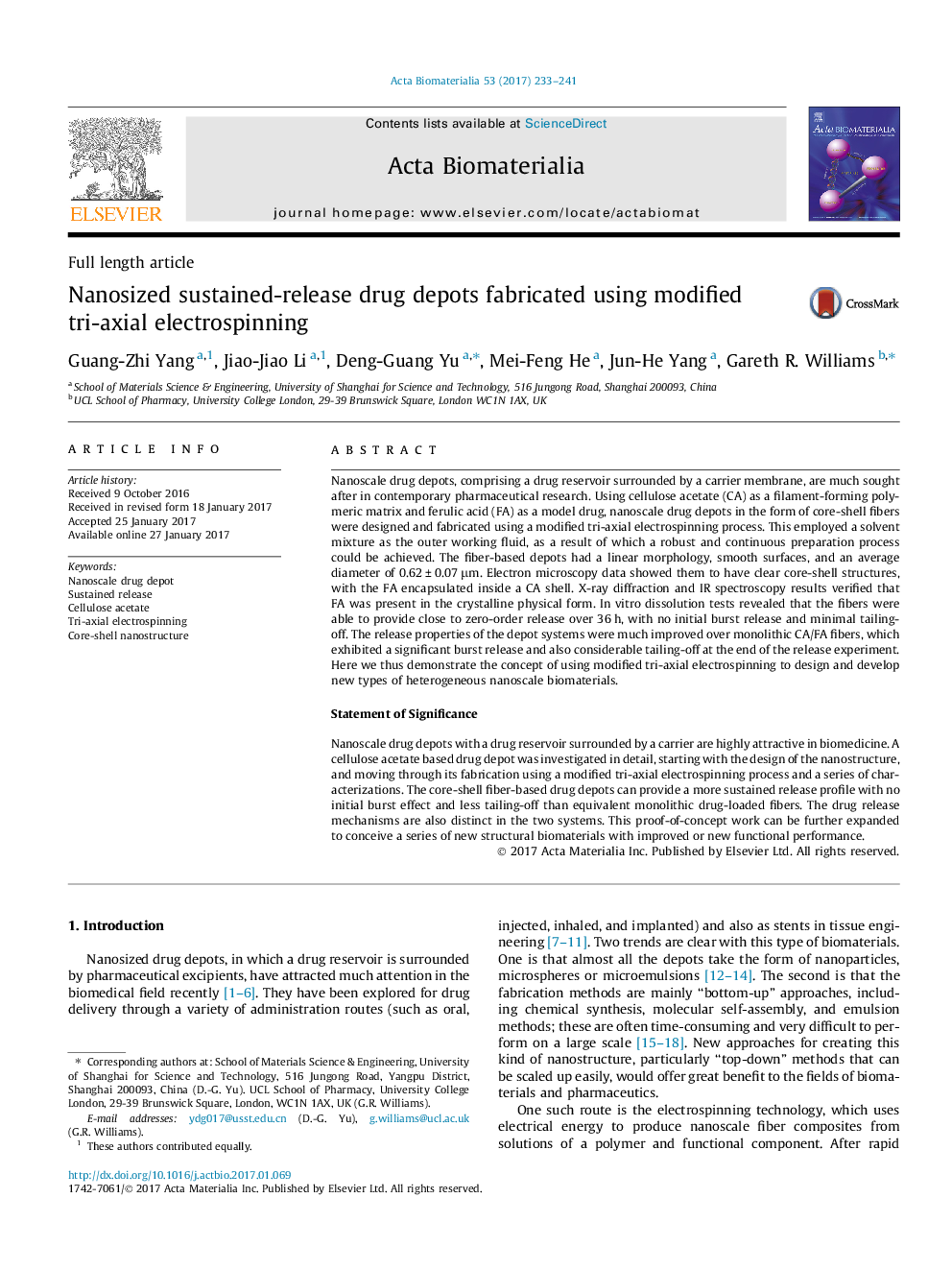| Article ID | Journal | Published Year | Pages | File Type |
|---|---|---|---|---|
| 6449566 | Acta Biomaterialia | 2017 | 9 Pages |
Nanoscale drug depots, comprising a drug reservoir surrounded by a carrier membrane, are much sought after in contemporary pharmaceutical research. Using cellulose acetate (CA) as a filament-forming polymeric matrix and ferulic acid (FA) as a model drug, nanoscale drug depots in the form of core-shell fibers were designed and fabricated using a modified tri-axial electrospinning process. This employed a solvent mixture as the outer working fluid, as a result of which a robust and continuous preparation process could be achieved. The fiber-based depots had a linear morphology, smooth surfaces, and an average diameter of 0.62 ± 0.07 μm. Electron microscopy data showed them to have clear core-shell structures, with the FA encapsulated inside a CA shell. X-ray diffraction and IR spectroscopy results verified that FA was present in the crystalline physical form. In vitro dissolution tests revealed that the fibers were able to provide close to zero-order release over 36 h, with no initial burst release and minimal tailing-off. The release properties of the depot systems were much improved over monolithic CA/FA fibers, which exhibited a significant burst release and also considerable tailing-off at the end of the release experiment. Here we thus demonstrate the concept of using modified tri-axial electrospinning to design and develop new types of heterogeneous nanoscale biomaterials.Statement of SignificanceNanoscale drug depots with a drug reservoir surrounded by a carrier are highly attractive in biomedicine. A cellulose acetate based drug depot was investigated in detail, starting with the design of the nanostructure, and moving through its fabrication using a modified tri-axial electrospinning process and a series of characterizations. The core-shell fiber-based drug depots can provide a more sustained release profile with no initial burst effect and less tailing-off than equivalent monolithic drug-loaded fibers. The drug release mechanisms are also distinct in the two systems. This proof-of-concept work can be further expanded to conceive a series of new structural biomaterials with improved or new functional performance.
Graphical abstractFigure optionsDownload full-size imageDownload high-quality image (228 K)Download as PowerPoint slide
